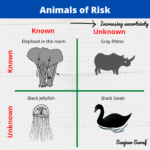Process Safety has evolved significantly since the introduction of PSM in 1992. Here are top five challenges facing the process safety community today.
1. Human Error
One of the reasons “zero incident plants” is a myth is the potential for human error. We cannot take away human intervention and the possibility of elimination of human error in design or operation. It is therefore expected that human error will remain a contributing factor in chemical accidents.
2. Knowledge Management
As the folks who witnessed creation of safety standards following the 1984 Bhopal tragedy retire, they take away with them invaluable tacit knowledge. As policies and people change, corporate memory becomes weak. It is no surprise then that the accidents of today often duplicate failures of the past. Companies that are trying to implement knowledge management end up creating electronic document repositories. But saving a HAZOP file isn’t really saving the knowledge of the retiring group…is it?
3. Work Force Shortage
Today there is a dearth of process safety engineers – I anticipate that by 2020 the deficit of process safety engineers would be 10%. There are two reasons for this (a) retiring baby-boom workforce and (b) shortage of graduating engineers. A contributing factor is that most engineers learn about safety when they join industry and start working – there are very few undergraduate programs, such as Texas A&M, that educate students about process safety.
4. Terror Threat
9/11 for chemical plants has not occurred and appears to be highly unlikely. However all signs today indicate increased terror attacks in the coming few years. The probability for a dramatic terror incident involving refineries appear to be rather small but one such incident can have serious repercussions.
5. Asset Management
It is a well known fact that production budgets are shrinking and operations are becoming leaner. As refineries get older and plants age, asset maintenance will gain increasing importance to reduce equipment failures. Although risk based inspection is currently being employed to focus on maintenance activities, there are considerable opportunities for optimization of asset management.
Please leave a comment below to tell us what measures you are taking to address the above issues.






One Response
It was the explosion at Flixborough that highlighted a major flaw in managing changes to facilities and it was Bhopal 10 years later that showed industry there were scenarios that should not be allowed to occur. This led to formation of the Center for Chemical Process Safety under the AIChE. Their second book, Guidelines for the Technical Management of Process Safety forms a comprehensive basis for PSM, and while other ‘programs’ have been proposed, the CCPS approach is still the most comprehensive. A precis of the book can be found on the CSChE web site at http://psm.chemeng.ca/help_guide_e.htm.